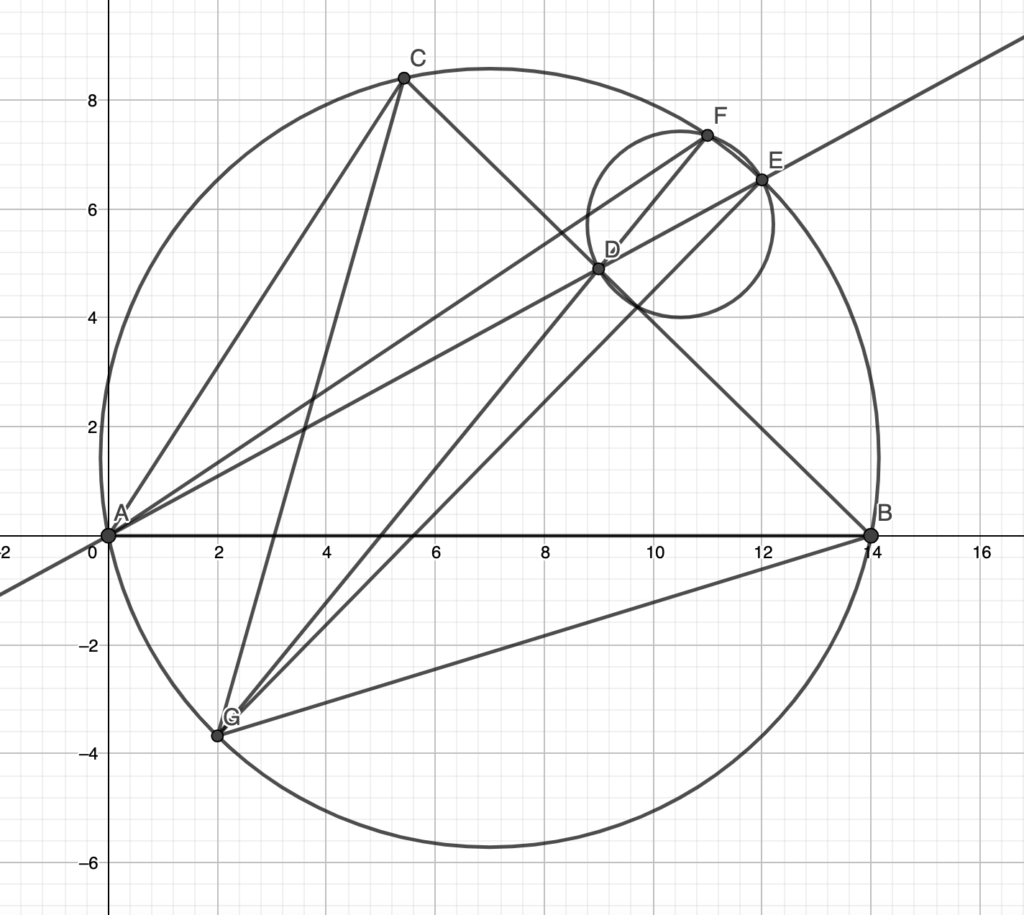
In the figure, suppose AB = 14, BC = 12, CA = 10. AD is the angle bisector of A, intersecting the circumcircle of ABC at E. The circle with diameter DE intersects the circumcircle of ABC again at F. Find the measure of AF squared.
To solve this problem, I used a theorem named Stewart’s Theorem, I’ll provide its proof in this article below.
Stewart’s Theorem

Referring to the figure above, Stewart’s Theorem says:
To prove it, notice that by Carnot’s Theorem:
Using these relations we get:
And we are done.
Back To Our Problem
Now let G be the diametrically opposite of E, then obviously G,D,F are collinear since
Notice quadrilateral GEFA is cyclic, so triangles GED and AFD are similar, and we get:
Hence
Now by the Bisector’s Theorem we know
So BD = 7, DC = 5.
Now, by Stewart’s Theorem on triangle ABC, we get:
By Carnot’s Theorem, we have:
By the Law of Sines, we get
Now, since AE is the angle bisector of CAB, we know E is the midpoint of minor arc BC, so its diametrically opposite B must be the midpoint of major arc BC, hence CG = BG.
Now, by Carnot’s Theorem, we get
Hence, by Stewart’s Theorem:
Finally, using our initial relation we get